🦎 Introduction
Choosing the right substrate (flooring material) for your leopard gecko is one of the most important—and most debated—parts of setting up their tank.
A bad substrate can cause impaction, harbor bacteria, or irritate your gecko’s skin. A good one supports healthy movement, digging behavior, and keeps their enclosure clean.
In this guide, we’ll explore the best and worst substrates for leopard geckos—and which one is right for you.
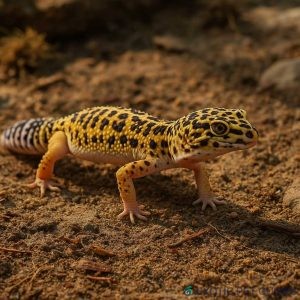
✅ Best Substrates (Safe & Recommended)
1. Paper Towels
- 🟢 Pros: Cheap, easy to clean, safe for hatchlings or sick geckos
- 🔴 Cons: Not attractive, needs frequent changing
Best for: Beginners, quarantined or baby geckos
2. Reptile Carpet
- 🟢 Pros: Reusable, safe, low risk of impaction
- 🔴 Cons: Can trap bacteria in fibers, must be cleaned weekly
Tip: Get two pieces and rotate them during cleaning.
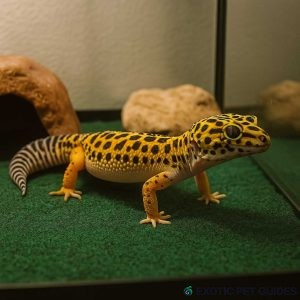
3. Slate Tiles or Ceramic Tiles
- 🟢 Pros: Natural feel, helps file nails, easy to clean
- 🔴 Cons: Heavy, needs cutting to fit
Bonus: Retains heat well when placed over UTH (under tank heater)
4. Excavator Clay (Advanced Option)
- 🟢 Pros: Naturalistic look, customizable, allows digging
- 🔴 Cons: Hard to work with, must dry before use
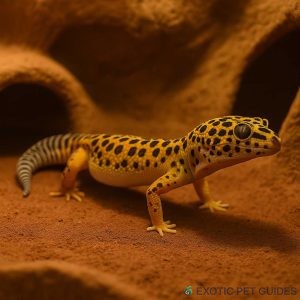
⚠️ “Use With Caution” Substrates
❗ Coconut Fiber / Eco Earth
- Holds humidity—bad for leopard geckos
- Inhalation hazard when dry
- Can cause impaction if ingested
Use only in humid hides, not full enclosures.
❗ Aspen or Wood Shavings
- May cause eye or skin irritation
- Poor humidity control
- Difficult to clean
❌ Dangerous & Not Recommended Substrates
🚫 Loose Sand (Play Sand, Calci-Sand, etc.)
- Impaction risk: Fine particles can block the digestive tract
- Dust inhalation: May irritate gecko’s lungs
- Despite marketing claims, calcium sand is not digestible
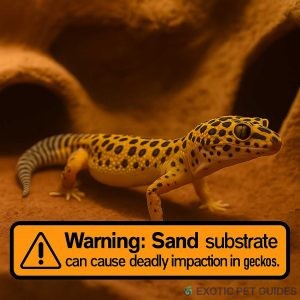
🚫 Gravel, Pebbles, Bark
- Too large to pass if swallowed
- Can trap uneaten food
- May harbor mites or mold
🏗️ Best Practice: Layering for Function
You can combine substrates smartly:
- Base: Slate or tile for heat and easy cleaning
- Moist hide: Coconut fiber in a small container
- Dig box (optional): Excavator clay or soil in one section
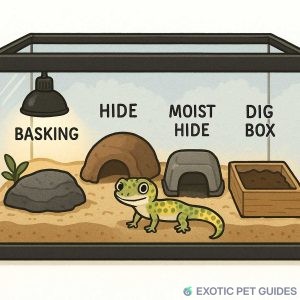
🧼 Cleaning & Maintenance Tips
- Tile & carpet: Clean weekly with reptile-safe cleaner
- Paper towels: Change every 2–3 days
- Clay setups: Spot-clean weekly, replace sections monthly
- Avoid soap or chemicals with scents
🐾 Conclusion
The best substrate for leopard geckos depends on your experience level, tank design goals, and maintenance routine. Beginners should stick with paper towels, reptile carpet, or tile, while experienced keepers may explore naturalistic setups with excavator clay.
❌ Avoid sand at all costs—even if the pet store says it’s safe.